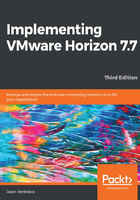
VMware User Environment Manager
VMware User Environment Manager (UEM) is an optional component of VMware Horizon that provides the ability to roam end user Windows profile and persona configuration data, including application settings, across different Windows Operating System (OS) versions, or even between physical desktops and virtual desktops or Windows RDS Servers.
VMware UEM works with all three Microsoft Windows profile types, including mandatory, roaming, or local. UEM is not a replacement for any of these profile types as it does not roam user data across sessions or devices, only across the profile and persona configuration. User data should be saved using techniques such as roaming profiles, or even folder redirection.
Highlights of the benefits of UEM include the following:
- A consistent and personalized end user experience, regardless of where a user logs in or which Windows OS they are using
- Implementation of various settings that previously required AD group policies, such as Windows user profile redirection, and some Horizon agent settings
- Customization of user settings, such as printers, based on logon location
- Elimination of the need to perform user profile migrations when moving to a newer version of Windows that has a new profile type (such as from Windows 8.1 to Windows 10)
- Robust design that scales to support over a hundred thousand end users
- Simple design that requires no scripting knowledge, can be implemented rapidly, and requires minimal infrastructure to begin using
Chapter 12, Implementing User Environment Manager, provides information regarding the implementation and administration of UEM.